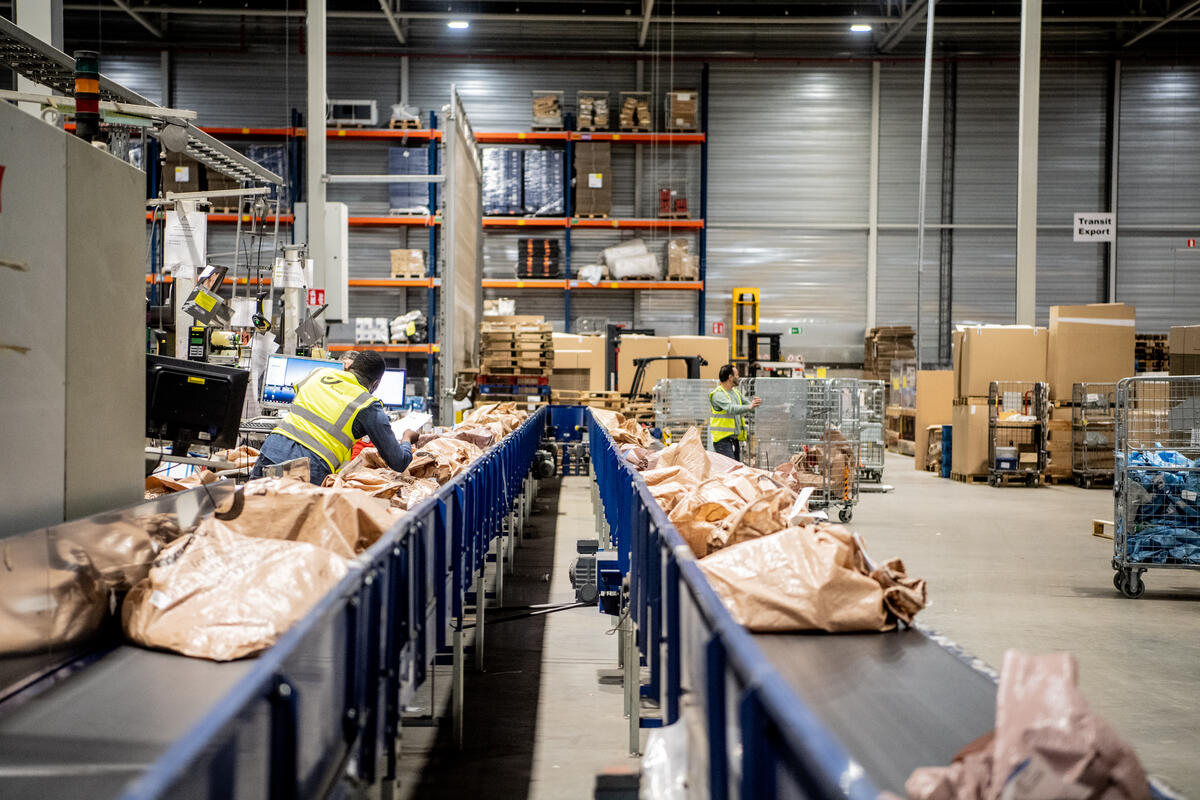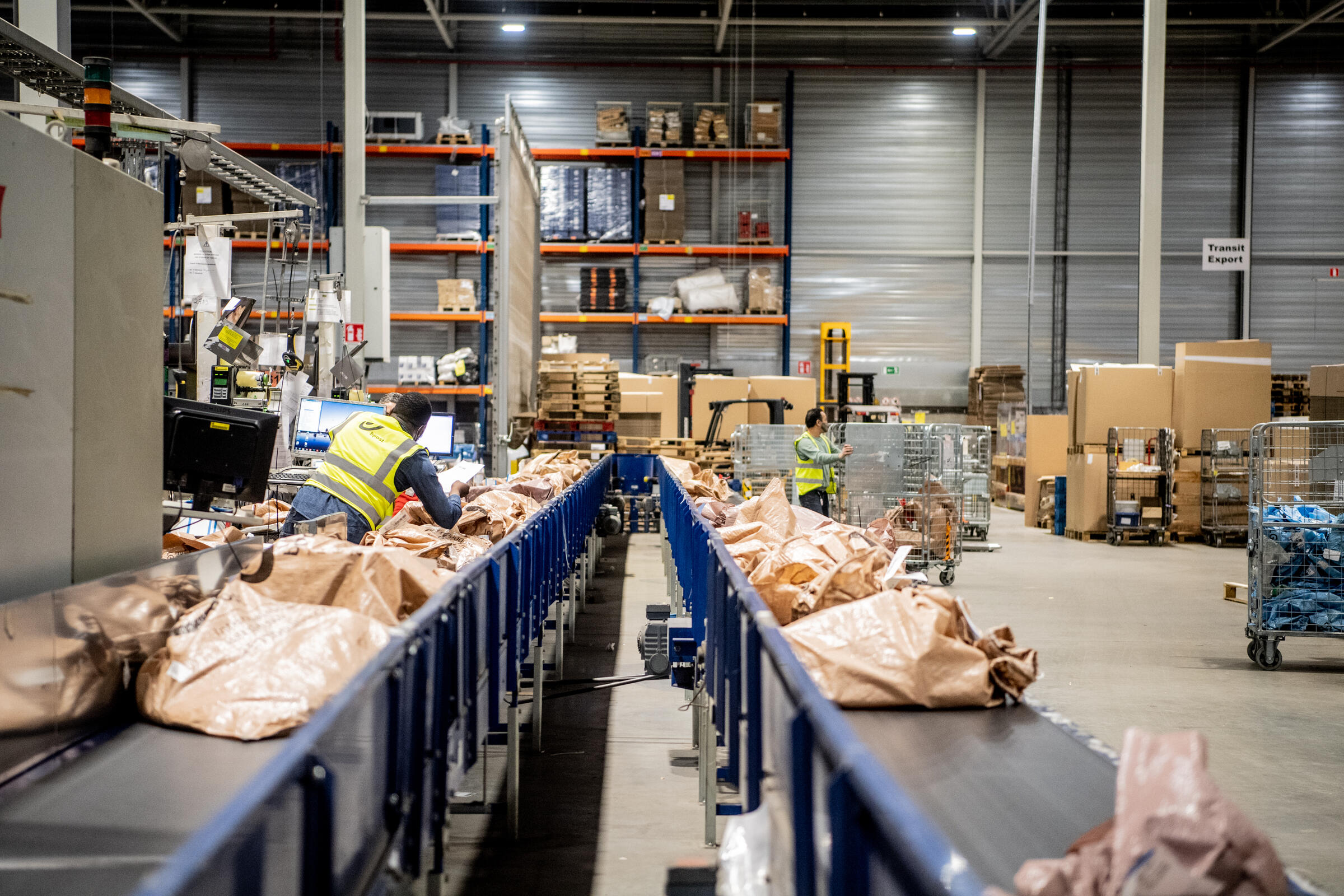Prepare for Peak: A Conversation with Stephen England, Operations Director at Landmark Global UK
Every year, e-commerce businesses brace for the most intense period on the logistics calendar: the end-of-year peak. It’s the stretch that begins with early promotions in October, accelerates through Black Friday and Cyber Monday, and rolls all the way to the Chinese New Year. For retailers, this is when sales volumes soar. For logistics providers like Landmark Global, this is when months of preparation are put to the test.
Stephen England, Operations Director at Landmark Global UK, discusses how the company prepares for peak, why collaboration is critical, and what e-commerce brands should focus on to turn logistical stress into business opportunity.
Q: Why do we talk about “peak” as early as autumn?
Stephen England: Because peak isn’t a weekend anymore, it’s a season. The traditional idea of a sudden Black Friday spike followed by a December slowdown has evolved. Today, we see sales build gradually from mid-October and stretch into January. Then comes the returns “mini-peak,” followed by the Chinese New Year.
For logistics providers, this means three to four months of elevated activity, not a two-week sprint. That’s why our planning starts months in advance. Every process, from equipment maintenance to client forecasting, must be tuned before volumes ramp up. By October, preparation time is over. We’re executing.
Q: What are the first areas Landmark Global looks at when preparing for peak?
SE: It starts with our facilities. We make sure every site is fully stocked with consumables like pallets and pallet boxes so we don’t run into supply shortages mid-season. Preventive maintenance is also essential. A single equipment failure can create a chain reaction, so we service all machinery well before peak begins.
We also conduct pre-peak warehouse cleanups to maximise usable space and streamline flow. Clean floors mean faster processing and less risk of delays.
Then comes transport capacity. We work closely with carriers and pre-book space on key air and road routes. Contingency planning is part of that too. If weather, strikes, or border delays occur, we already know our plan B.

EMC facility, Brussels, Belgium
Q: How do you ensure operational efficiency during such a long and demanding period?
SE: Communication and escalation protocols are critical. We establish a dedicated ICT escalation process early on so that any system issue gets instant attention.
We also align all our European operations under a centralised model. This means data from every site - Belgium, the UK, and beyond - flows into one operational dashboard. With that unified visibility, we can make faster, more informed decisions. It’s a major reason why we’ve been able to increase efficiency and consistency across regions.
And finally, we take care of the basics. Waste management, for example, might not sound glamorous, but during peak the sheer volume of packaging waste can double. Having procedures in place for that helps maintain speed and safety.
Q: Why is workforce wellbeing a priority?
SE: Because people make peak work. No automation can replace the judgment and stamina of experienced teams. When volumes surge, fatigue can set in fast.
We address this proactively. For example, our warehouse teams receive additional comfort measures: hot drinks, warm jackets, adapted break schedules. We run “Special 5” briefings to reinforce focus on safety and process compliance. We also increase our pool of temporary workers to balance workloads and give everyone breathing room.
Peak period is a logistical challenge, but it’s also about morale. People make the difference.
Q: What is collaboration at Landmark Global like in practice?
SE: It starts with forecasting. We ask clients to share their sales predictions early, ideally based on a combination of last year’s data and current trends. The more accurate that forecast, the better we can match capacity to demand.
But collaboration goes both ways. We encourage clients to ask us questions too: Do we have space pre-booked with airlines? How did we scale after last year’s peak? Can they visit our facilities to see operations firsthand? Transparency builds trust.
We also ensure that account managers and operations teams are fully aligned before peak hits. That way, our clients get consistent communication about their volumes, delivery timelines, and any potential bottlenecks.
Q: How do you help clients manage end-customer expectations during peak?
SE: Visibility and communication are everything. We work with clients to make sure shipping cut-off dates are clearly communicated across their websites and marketing channels. If customers know the last order date for guaranteed delivery, that prevents frustration and all the “where’s my order?” queries later.
We also advise sellers to offer diverse delivery options. For early shoppers, standard tracked delivery works perfectly. For last-minute buyers, express options are essential. And for customers who value discretion or convenience, parcel shop or locker delivery (PUDO) is ideal.
Offering choice isn’t just customer service, it’s conversion strategy. The right delivery options can directly increase sales during peak.
Peak season is where preparation meets performance.
At Landmark Global, our goal is to make sure our clients feel supported every step of the way and that end consumers experience deliveries that feel effortless.
Q: Returns are often overlooked in peak planning. What’s Landmark Global’s view on that?
SE: Returns are a peak in themselves. After January, we typically see a surge in returned parcels. Retailers who haven’t prepared for that can end up with bottlenecks just as things should be winding down.
We advise clients to treat returns as part of their sales strategy. Make the process simple and clearly communicated. Offering free or easy returns can even boost confidence during the buying stage.
And internally, we plan extra capacity to handle that post-peak wave. It’s the final piece of ensuring a seamless end-to-end experience.
Q: Finally, what advice would you give to e-commerce brands entering the peak season?
SE: First, don’t underestimate preparation. Stock, staffing, site performance, and logistics must all align. Second, use your delivery experience as part of your brand promise. Customers remember the ease of delivery just as much as the product itself.
And third, think long-term. Peak is a great time to acquire new customers, but what happens afterward matters even more. Have a retention strategy ready: follow-up emails, loyalty offers, or incentives to bring shoppers back in the quieter months.
Peak is demanding, yes, but it’s also an opportunity to show what your business can do under pressure. With the right planning and the right partners, it can be your strongest season of the year.
The Takeaway
At Landmark Global, preparing for peak isn’t about reacting to demand, it’s about anticipating it. From facility readiness and workforce wellbeing to client collaboration and contingency planning, every step is engineered to maintain reliability at scale. For e-commerce brands, that’s the true definition of a successful peak.
Open your world
Landmark Global is the trusted international logistics partner that powers your e-commerce growth. Reaching up to 220 destinations worldwide, our services include international parcel delivery, customs clearance and returns management. It is our business to deliver your promise wherever, whenever.
Related news

2026 Logistics Forecast: The Era of Predictive Supply Chains
If 2025 was the year of "correction", fixing data flows for ICS2 and managing return rates, 2026 will be the year of Integration.

E-logistics Retrospective 2025: From the UK to North America and Back
If we had to summarize the state of the global logistics market in 2024, the word might have been "stabilization." But looking back at 2025, the narrative has shifted dramatically. This was the year of Strategic Refinement.

Top 10 Essential Facts About Australian Ecommerce
Australia’s ecommerce market faces long delivery distances, concentrated marketplaces and growing cross-border demand, making service quality crucial. This article provides retailers and brands with a clear, practical overview of the opportunities and challenges that matter most when entering, scaling or optimising operations in the Australian online market.


